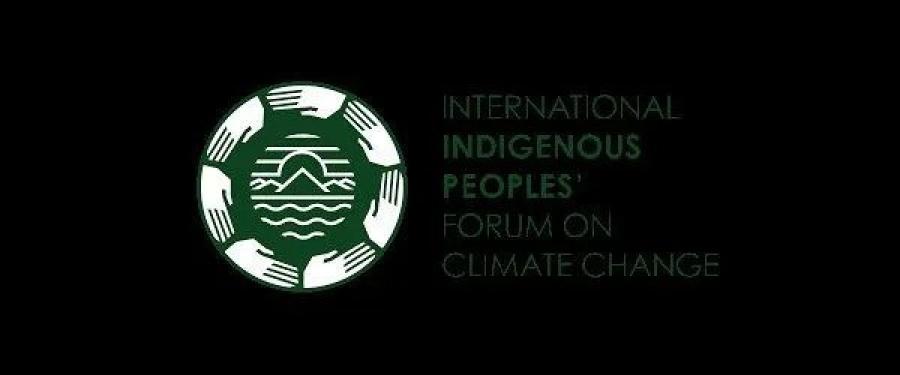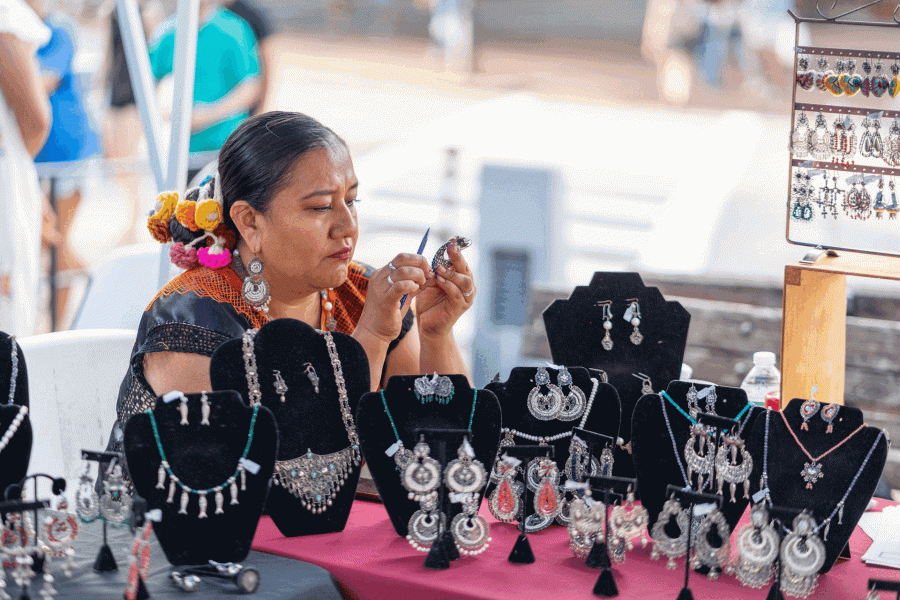
Indigenous Peoples around the world have to constantly face the challenge of dealing with discrimination and violence, be it physical or psychological, in the form of exclusion and marginalization. Certain vulnerable groups however, such as Indigenous women and members of the 2SLGBTQ+ community, are particularly susceptible to this scenario. Indigenous Peoples’ views and understandings of gender are just as diverse as their cultures are but centuries of colonization and imposed religions have transformed gender relations, producing imbalances of power, voice, and respect inside these communities. The following Indigenous Youth Fellows, supported by fellowships awarded through Cultural Survival’s Capacity Building Program, are working to shift this balance. They are strengthening community bonds and revisiting tradition with new perspectives, celebrating diversity, and connecting to their ancestrality while shaping a more equitable and inclusive future.
Irati Dojura Landa Yagarí and the Kiraparamia Project
“I’m always looking to learn and develop tools that allow me to contribute to my community through audiovisual knowledge. Audiovisual is a universal language that can create a space of freedom and creativity, opening a possibility to believe and create.”
Irati Dojura Landa Yagarí (Embera Chamí) is from the department of Antioquia, Colombia. She left her homeland Karmata Rúa Reserve seven years ago to continue her studies, but she has remained deeply connected to her territory, carrying the ancestral and cultural legacy of her Peoples and expressing it through her artistic projects. Holding a degree in Audiovisual and Multimedia Communication, she has been involved in multiple projects as a director, producer, and photographer. Ethnicity and Indigenous topics crosscut all these productions, and through them, she has earned awards and national recognition.
The Kiraparamia Project was born out of an experience Irati had as a child: “When I was seven years old, I saw a theater play done by students from my reserve. I remember seeing a woman with her face painted blue and her hair covered. She cried while everyone else laughed. I asked my mom what I had just seen. She explained to me that Kiraparamia was a woman punished by nature for laughing at her husband, to which I asked: "Why punished if she was gifted instead?” Irati realized oral tradition had been long transmitted in her community, but never through a gender perspective. Aiming to cast light on the social and daily challenges faced by Embera Chamí women, Irati had the idea to produce a short stop-motion animation revisiting the Kiraparamia myth from a feminine perspective.
Irati and a local girl in the production of the film at Karmata Rúa
Many hands were involved in making the short film, most of them belonging to local Indigenous youth from Karmat Rúa. The chaquira traditional art, used to give life to the characters and scenario, was produced by Collective Werapa, a local group of trans women. Besides promoting a debate about gender and contributing to the revitalization of the traditional language, the project also brought visibility to local artists and members of the 2SLGBTQ+ community. The final result was a beautiful and impactful spot motion animation called Akababuru: Expresión de Asombro (Akababuru: Expression of Astonishment), which will be released to the public in 2025.
Image from the Stop Motion Akababuru: Expresión de Asombro
Thaís Sarmento Fernandes and Coletivo Miriã Mahsã
Coletivo Miriã Mahsã is a 2SLGBTQ+ group based in the state of Amazonas, Brazil. The collective has around 30 members, all Indigenous youth coming from a diversity of Peoples: Tukano, Sateré Mawé, Munduruku, Dessana, Tikuna, Baré, among others. Most of the members identify as Trans and non-binary. They have migrated from their communities, villages and territories to the city of Manaus, capital of Amazonas, in search of work and study opportunities. What they ended up finding is an unwelcoming scenario, where violations and discrimination - whether directly or veiled, in the form of racism or discrimination for their gender identity and sexuality - lead them to social vulnerability.
As a response to this reality, Coletivo Miriã Mahsã aims to be a space of inclusion and support, welcoming 2SLGBTQ+ people from Amazonas, and encouraging their protagonism through political, artistic, and cultural manifestations. Thaís Sarmento Fernandes, from the Dessana (Wirã) people, is one of the coordinators of the Miriã Mahsã collective. Holding a degree in Social Services and currently doing her Master's degree in Social Anthropology, she dedicates her studies and political action to this cause. Together with other coordinators of the collective like Pedro Tukano, Vivian Baré, and Kuenan Tikuna, she has organized a series of events to promote the rights of Indigenous 2SLGBTQ+ youth.
Members of the Coletivo Miriã Mahsã in Brasília, Brazil
The first event was a two-day meeting where roundtables, discussions, and workshops took place. Indigenous mental health and well being, public policy and urban migration, sexual and reproductive rights, cultural erasure, and racism were some of the topics addressed. About 30 people attended the activity, mostly Indigenous youth and members of the network of Indigenous Women of Amazonas (Makira E’ta). A second event was also organized by Coletivo Miriã Mahsã: the first Indigenous ballroom event of the Amazon, and the second in Brazil. Ballroom culture originated in New York in the 1970s as a space where the Drag Queen and Trans community could freely express their gender identity and sexuality. The “Ballroom of Ancestral Spirits” revisited this culture adding to it elements and colors of local Indigenous and Amazonian tradition. The event had a strong circulation in the media and over 100 people attended. According to Thais, both events had a strong impact, strengthening the collective and the community, while building networks of political activism and affection.
First Indigenous Ballroom in the Amazon - Picture by Alberto César Araújo/Amazônia Real



